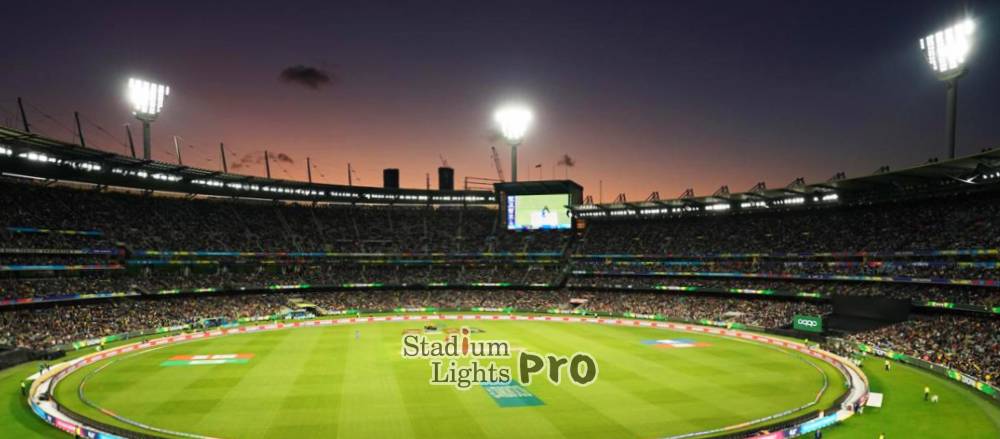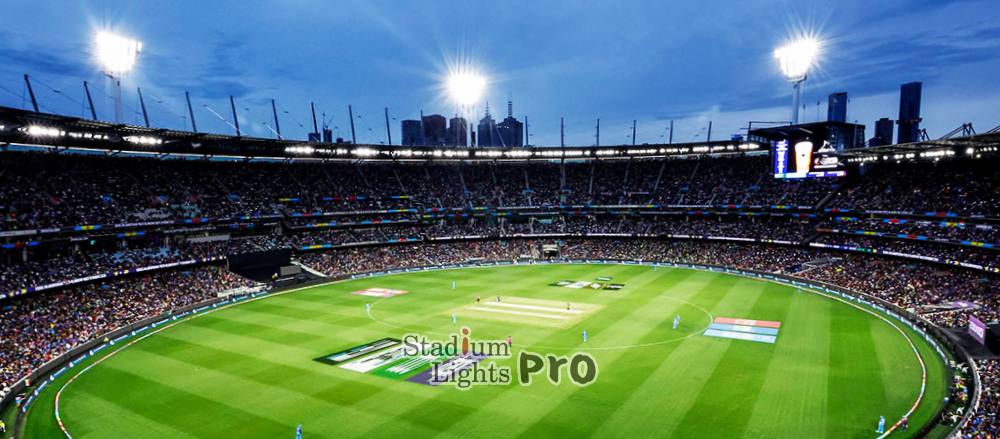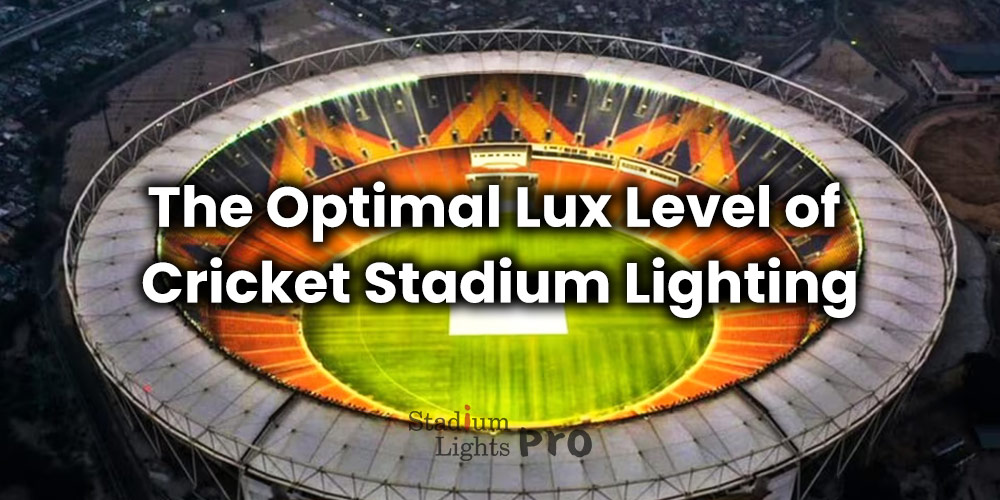To achieve optimal lighting conditions, we need to understand the concept of lux, its significance in cricket stadium lighting, and the specific lux requirements for different levels of competitions and areas within the stadium.
Table of Contents
ToggleUnderstanding lux
Lux is a unit of measurement used to quantify the intensity of light falling on a surface. It is derived from the International System of Units (SI) and is equivalent to one lumen per square meter (lm/m²). Lux provides a standardized metric for assessing the amount of light reaching a specific area and is essential for determining appropriate lighting levels in various settings, including sports venues.

Cricket field lux requirements for different levels of competitions
Local and amateur matches
For local and amateur cricket matches held in smaller venues, a recommended minimum lux level of 200-500 lux is often sufficient. This range ensures reasonable visibility for players, umpires, and spectators, enabling them to track the trajectory of the ball effectively.
Professional matches and domestic leagues
As the level of competition increases, so do the lux requirements. Professional matches and domestic leagues typically necessitate a higher lux level to accommodate the increased skill and speed of players. A minimum lux level of 800-1000 lux is commonly recommended to meet the demands of these competitions. This ensures optimal visibility and enables players to react swiftly to the ball.
International matches and major tournaments
International matches and major tournaments garner significant attention and feature world-class cricketers. To provide the highest standards of lighting, lux levels of 1500-2000 lux or more are often required for these prestigious events. This ensures impeccable visibility for players, officials, and spectators, enabling the game to be played at its best.

Lux requirements for cricket infield and outfield
The lux requirements may also vary within different areas of the cricket stadium. We may consider the specific lighting needs for both the infield and outfield.
Infield
The infield area, including the cricket pitch, requires higher lighting levels to facilitate accurate gameplay. A minimum lux level of 1500-2000 lux is recommended to ensure optimal visibility for batsmen, bowlers, and fielders. The higher lighting levels allow for clear visibility of the ball’s rotation, bounce, and movement, allowing players to make precise judgments.
Outfield
The outfield, comprising the surrounding areas beyond the pitch, demands slightly lower lighting levels compared to the infield. A lux level of 1000-1500 lux is generally sufficient to provide satisfactory visibility for fielders and ensure a consistent playing experience throughout the stadium. However, we may maintain uniform lighting distribution across the entire field to avoid any disparity in visibility.
How to measure the lux values in a cricket stadium?
 To accurately measure the lux values in a cricket stadium, you will need the following equipment:
To accurately measure the lux values in a cricket stadium, you will need the following equipment:
1. Light meter
A light meter is a device specifically designed to measure the intensity of light in lux. There are various types of light meters available, including handheld digital meters and smartphone apps that utilize the phone’s camera sensor. Ensure that the light meter you use is calibrated and suitable for measuring lux values.
2. Tripod or stable mount
To ensure consistent and steady measurements, it is advisable to use a tripod or stable mount to position the light meter. This helps avoid any shaking or movement that may affect the accuracy of the readings.
Here’s a step-by-step guide on how to measure the lux values in a cricket stadium:
Prepare the stadium
Before taking measurements, ensure that all the stadium lights are turned on and properly functioning. Check for any obstructions that may cast shadows or interfere with the readings.
Select measurement points
Identify representative locations within the stadium where you want to measure the lux values. These points should include the infield, outfield, and areas where players, officials, and spectators are present. Choose a sufficient number of points to get a comprehensive understanding of the lighting conditions across the stadium.
Position the light meter
Set up your light meter on a tripod or stable mount at each measurement point. Make sure it is at a suitable height and angle to capture the light falling on the surface accurately. Follow the instructions provided with your specific light meter for proper positioning.
Take measurements
Activate the light meter and allow it to stabilize for a few seconds to obtain accurate readings. Ensure that the light meter sensor is facing upwards and directly exposed to the light source without any obstruction. Capture the readings displayed on the light meter for each measurement point.
Average and analyze readings
After obtaining the measurements from various points, calculate the average lux value for each area of interest, such as the infield and outfield. This average value provides a representative lux level for that particular area. Analyze the readings to determine if the lighting meets the recommended lux levels for different levels of competitions and specific areas within the stadium.
Maintain consistency
If multiple measurements are taken at different times or on different days, we need to ensure consistent conditions, such as similar weather, light bulb conditions, and overall lighting setup. This consistency helps ensure accurate comparisons and assessments of the lighting quality over time.
Regular maintenance and periodic recalibration of the light meter are crucial to maintain accurate lux measurements. It is also recommended to consult with lighting professionals or experts who have experience in sports lighting to ensure accurate measurement and compliance with relevant standards.
Conclusion
Proper lighting is a crucial aspect of any cricket stadium, ensuring fair play, safety, and an enjoyable viewing experience for spectators. The required lux levels vary based on the level of competition and specific areas within the stadium. From local matches to international tournaments, maintaining appropriate lux levels allows players to perform at their best and creates an engaging atmosphere for fans. By adhering to the recommended lux guidelines for cricket stadiums, we can enhance the overall cricketing experience and create an environment conducive to outstanding sportsmanship.
If you require further guidance on cricket field lighting or need assistance in determining the most appropriate lux levels for your cricket field or stadium, we are here to help. Please feel free to reach out to us without hesitation. Our team of experts is ready to provide you with valuable lighting advice and support to ensure optimal illumination in your cricket venue.

